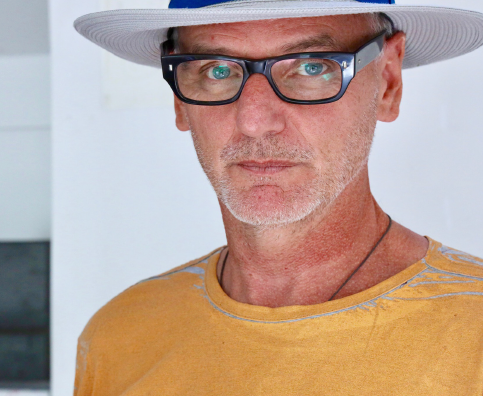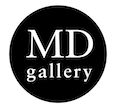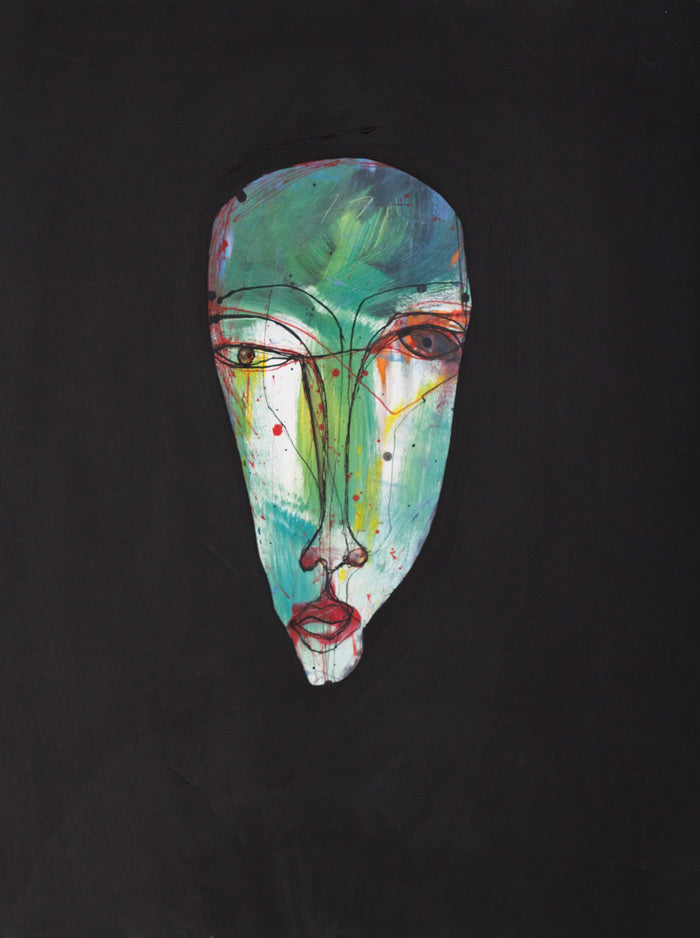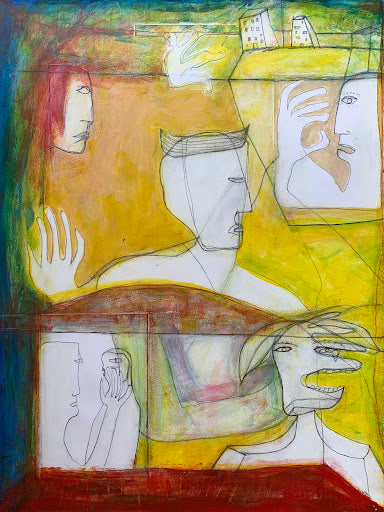-

Peter Bradburn
Peter Bradburn’s is the most orderly studio. It’s calm, quiet, clean and light streams in, filtered by the surrounding bush. I get a sense that every thing in here, and every action performed here, is afforded respect. Bradburn draws on LANA Aquarelle, which is a most beautiful paper. He has taken the time to research it’s history and visit the place of it’s making. Similarly, canvas has been selected and sourced with a focus that could be de-scribed as reverent.
As he trusts the ground, he also trusts his marks, describing the process of drawing as one involving both the utmost concentration and a degree of remove. Images are not mapped out in advance, tested or proofed in notebooks, but are the product of the moment. Always, there is the hope for the exquisite line that will embody the essence of the idea that he does not attempt to encapsulate in words. The sometimes spare marks on paper are the distillation of years of looking, reading, thinking and working. He explains that he resists any urge to “colour in” or fill out the drawings, instead he has confidence in his process and is accepting of its results. Once completed, drawings are gathered and filed, never discarded.
The works on paper and canvas in this exhibition are selected from a large oeuvre, exe-cuted over a number of years. They are not illustrations of a particular narrative, or imme-diate and readable responses to specific texts or events. Instead, they speak of the role identified by this artist for himself, as a witness. In conversation, Bradburn repeatedly re-turned to the mantra that, if nothing else, what he can do is refuse to turn away. He speaks of Wilfred Owen, Goya and, in the next breath, contemporary female Pasifika writers, who did not (and do not) turn from the violence that is the reality of the modern world.
In Bradburn’s images, violence has been done. The body is visceral; there is evidence of damage and attack. Characters are two-faced or headless. Eyes search out the viewer. Pain and bitterness are not far from the surface. Our conversation stretches to take in the role of the church as a commissioner of art in Europe, Jungian philosophy, the problematics of making a living as an artist in a conservative, post-GFC world and the near religious experience of surfing. But, always, the talk swings back to politics and a deeply held belief that true community is impossible in the current political environment. The artist as observer can see the lies and the barriers that are constructed to keep people from working together and being their better selves. Setting himself one step back from the world, Bradburn explores the frailty and the complexity of being human today, fighting for or against both known and unknown threats. The results are drawings that speak with quiet but insistent voices. Let us stop and take time to look and listen.
Using graphite, gouache and acrylic pigment Bradburn attempts to transfer the images that appear in his head onto paper and stretched canvas, filtering as little as possible in the process. He works quickly and spontaneously to capture his thoughts regarding his reactions to people and places around him. There is no narrative and nothing is preempted in Heads.



